Zaph|Audio
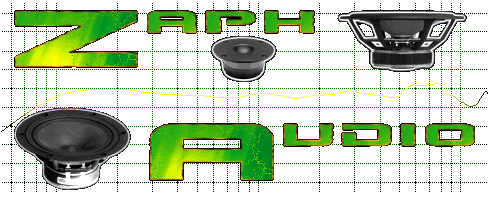
Zaph|Audio Blog - ramblings and rants of John Krutke (updated sporadically)
Zaph Audio Post Mortem
Hey guys, just a final update to this web site.
In case it's not obvious, I am no longer active in the DIY speaker building / testing / design hobby. There's no real solid reason why other than my participation has run its course, I've lost interest and moved on to other things. This web site remains, mostly as a DIY design guide. Heck someday I may get back into it and need my own web site to remember some things.
The fact that I started selling my own speaker through Madisound has nothing to do with it. I've heard it said before that as soon as you go into business for yourself, it stops being fun. But that's not the case for me.
Something that hasn't faded is my love of music. In fact, since exiting the speaker hobby, I find that I like listening to music even more. When you remove "critical listening and evaluation" from the listening equation, all that's left is to enjoy the music. It's not really much fun being a "chin stroking audiophile". I've found that for me, listening to music while trying to find flaws in a speaker design just sucks the enjoyment out of it.
I've sold my old big, heavy and hot amplifier and I'm now a big fan of digital tripath amps. There was no real reason for me to keep an old fashioned 60 lb monster around when I only really need a couple watts. I should have done that many years ago.
I do still work on an occasion audio project or test an occasional driver here or there, but my days of frequent posts to this website are unfortunately over for now. It seemed like I had a lot more time back then. There are many more things in my life fighting for my time these days.
What would I have done differently?
When I look back on the things in my speaker building hobby that I might have done differently, there's only a couple things that I would have changed. It's the music that I sometimes listened to that I really didn't like, as part of speaker evaluation. Just because someone said an artist's release is a good recording is not a reason to run out, buy it and force yourself to listen to it. There's a certain amount of snobbish attitude exhibited by fans of classical and jazz music, suggesting that this is the only music to judge speakers with. I think I even agreed with the music snobs at some point, but I've come to realize how wrong that is. Just listen to what you enjoy.
The other thing I would have changed is that I would have protected myself more from MDF dust while building speakers. People, that shit is NASTY and I had lung damage from it for a while. Never work in a confined space without airflow, and always wear a mask. (and ear and eye protection for that matter)
I would have kept my hobby more secret among friends and coworkers. Because every damn time someone finds out I used to be a speaker designer, the next question is "Uh... Can you help me hook up my home theater?" or "Uh... what's the best subwoofer I can get for $99?" and my answer of course is for that price you get what I call a "fart box".
What do I miss?
I miss interacting with some of the awesome speaker designers I used to chat with on the forums. I have no idea if any of these guys are even still around, but Dennis Murphy, Jeff Bagby, Mark K the other John K whose last name I couldn't hope to spell, Jon Marsh over at HT Guide and many others. All geniuses and it was great to chat on the forums overs the years back in those days.
I haven't been on a speaker related forum in so many years and it would be weird to stick my head in there at this point. But know that I do miss all my old chat buddies.
What don't I miss?
I kind of got tired of internet participation in this hobby. It's such a fringe hobby, yet I found it strange that because of my tests and projects, I gained so many fans but that came with a good number of haters too. A few "competing designers" really started to hate me. And even though I stopped doing it the last few years of driver tests, sometimes I didn't like posting bad results. Somewhere every driver is someone's baby or someone's favorite.
10 year anniversary of the ZA14W08 woofer
Wow, who would have thought I would still be selling those after all these years. Thankfully the price only went up a little and consistency has been good. I still test every batch. Interesting story, back in 2009 or 10, I recall someone saying "well look at that ZA5.5TT speaker - Zaph really wants to sell a lot of those woofers!" The funny thing though is that design came first and it was the reason the ZA14W08 was born. I became a serious believer in what the MMTMM format had to to offer and I wanted to do one the best I could, but I just couldn't bring myself to buy that many Seas Excel W15 drivers.
The idea at the time was to build enough for a few of my designs, the TT's and some extras, then hope I can sell the rest and break even. I ordered the bare minimum batch size at the time, 250 drivers. I asked my buds at Madisound if they were interested and they were, more so if I posted a few designs. I ended up posting the whole ZA5 "family" giving people a lot of options, and I use every one of those myself. In almost no time Madisound calls me up and says "we're going to need more." And they kept selling since.
So, I've been selling a driver for 10 years, roughly 6000 of them sold, but make no mistake - I still have the highest respect for the serious quality names of Seas and ScanSpeak. If I had a little more money at the time, my ZA5.5TT would have been made of Seas Excel or ScanSpeak Revelators, and the ZA14W08 would not be around. Seas and ScanSpeak always have been and still are the best.
So what HAVE I been up to?
I've been racing motorcycles for 6 years. At the club level, nothing too serious, not about to put Valentino Rossi out of business, hahah. I've recently retired from that due to old age, and I think I've reached the maximum number of broken bones a person should receive over their racing career. I currently have 3 titanium plates and 50 screws holding me together. I wouldn't say it's been an easy... or cheap 6 years, but I wouldn't trade it for anything. Made a lot of friends at the race track and have a lot of incredible memories. These days I wrench on road motorcycles and have a garage full of them. I ride some minis on a kart track and ride a BMW adventure bike on the road often.
But... we miss your driver tests!
See Hificompass.com. Very cool set of testing and very thorough. He is definitely carrying the torch for driver measurements.
January 4, 2013
A few nice drivers...
I've had a few tested drivers building up, I dug through them and picked out some of the better ones to post for you guys. I may not post in this blog much anymore, but rest assured that drivers keep landing on my porch. I've got a backlog of drivers waiting to get onto the test baffle right now.
LL2 C120 Air Motion Tweeter

Satori MW165DC
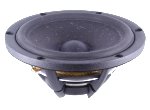
SBAcoustics SB15MFC30-8

SBAcoustics SB17MFC35-8
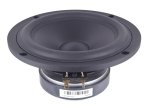
Seas FU10RB-04

Seas FU10RB-08

Vifa TC6FD00-04

Vifa TC7FD00-04

Notes: The tiny Vifa TC's are some pretty good performers if you are on the market for something that small. 1/2" baffle chamfered to a point on the back in those to help with airflow. All woofers tested have chamfered backs, but some demand thinner baffle boards than my standard 3/4" mdf. The Seas Curv coned drivers seem to have good motors and extended response curves, with only minor response curv deviations. Somewhat high Q though, watch that low end peaking. The new poly SB Acoustics woofers - smoooooth. Excellent performance all around at a good price, can't hardly go wrong. The 7" Satori probably has the best performing motor in the business, as shown by the class leading harmonic distortion plots. Response curve is pretty good too, only a minor breakup dip of such narrow bandwidth that it is likely inaudible. And on to the most interesting test in the group, the LL2 C120 Air Motion Tweeter. I've tested a few other AMT's but this one has a response curve that is actually workable. That is the typical issue with AMT drivers, response curves so bad that you can't fix them in the crossover. The crossover will need to be LR4 or steeper with a few components added to control the low end peaking, but aside from that in it's operating bandwidth the tweeter has the very low harmonic distorion like most AMT tweeters.
June 24, 2012
Winner Selected...
And we have a winner, or two. Well they were all winners and I applaud the creativity of everyone who sent an entry in. We had about 25 entries. Picking a couple out wasn't easy. Keep in mind the winners selected may not even be the best sounding examples, they were just the most interesting to me.
Winner #1: Andi Widhibrata. Andi proposed ZA5.2 based passive/active dipole speakers. These use the full ZA5.2 kit including passive crossovers and combine them with active crossovers with dipole compensation. Andi's design is a beautiful slim and compact dipole. What's neat about this design is that it could work with any traditional 2-way in-a-box design and convert it easily to dipole. It could open the door for people to try out dipole even with box systems they already have built. I'm keeping an eye on what Andi does and I may even give this design a try myself.
Winner #2: Hubert Keller. Hubert proposed a special two-way, pushing the ZA14 efficiency to its max by floor loading the woofer and running it in a TL. This design flies in the face of convention because of a large space between the tweeter and the woofer - The tweeter would be close to ear height. Now you would think that lobing would be a horrendous problem, but Hubert proposes steep slopes, meaning lobing issues are narrow band. Now I'm curious how this will turn out (even if it doesn't) and look forward to a full report from Hubert.
Thanks everyone. There will be other contests in the future.
June 19, 2012
The contest is closed...
Looks like most people sent in their entries at the last minute. Give me a few days to go over the entries and the winner will be notified by Friday. Thanks for the interest!
June 4, 2012
KEF Q100 coax test results...
Pictures
High frequency element
Low frequency element
Here we have a great coax. Much better than any other coax I've tested, though I've only tested 3 or 4 of them. There is nothing bad about these drivers, but let's start with the tests that are merely ok. Harmonic distortion is good but not state of the art. Slightly high 2nd order on the low end, likely due to the non-symetrical surround design. If we were to see a Klippel Kms(x) it would probably be slightly lopsided. The Le(x) and distortion plots while not perfect, show that this woofer can be used higher in frequency without issue.
But the non-symetrical surround greatly helps some other elements of this driver. The cone behaves like a well shaped waveguide with no edge reflections causing response issues. Additionally, the interface between the tweeter frame and woofer cone is perfectly smooth. The end result is both drivers having smooth and well controlled response. The tweeter shows good control of directivity.
The woofer cone has very little breakup and that breakup is already down in level. Both drivers have smooth natural rolloffs and making a crossover for this system would be easy and would probably only need a few components. In fact I bet this would sound great as a system with only a single cap and coil in the crossover. Throw in a zobel and a resistor for perfection.
This tweeter uses what I guess could be called a throat lens. The result is no reflections at the base of the throat and perfectly smooth top end. This is much the same reason that the XT25 makes a good waveguide tweeter with it's phase plug in the middle. These concepts certainly work better that other solutions such as foam stuck in the throat. This is a waveguide with smooth response on axis and off. Many standard waveguided tweeters will only give smooth response off axis.
Build quality is high with a cast and well ventilated frame. The driver must be rear mounted with the surround edge flush with the baffle for smoothest respose. Overall this is a pretty amazing coax. This driver is available from the Speaker Exchange for a very reasonable $112 each. I would expect the assembled KEF Q100 system to be a pretty good deal also for between $400 and $550 a pair.
June 4, 2012
A nice coax...
Here we have a coaxial from KEF that shows some good potential for excellence. Note the smooth tweeter to woofer transition, and the tweeter's lens which would seem to be specifically designed to prevent throat reflections. Note the unique surround design that does not protrude into the woofer cone that makes up the waveguide for the tweeter. If I were to design a coax myself, it would probably look similar to this. It's on the test baffle now. Results posted shortly, and probably a few other drivers some time after that.
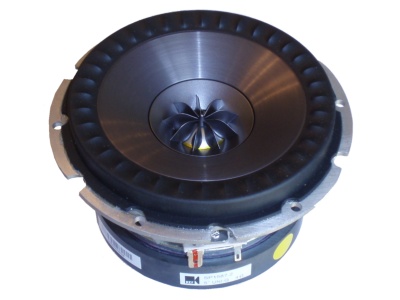
SB Acoustics SB12MNRX25

Wavecor TW030WA05-01

Are you ready?
The contest mentioned below is now open. Email your entry to  . One entry per person please, and make your emailed entry your final one. Or at least, if you can't decide what you want to do, wait until the last day to send it in. The contest will close on Monday June 18th. (2 weeks from this posting) A winner will be selected withing a couple of days from that. Good luck!
. One entry per person please, and make your emailed entry your final one. Or at least, if you can't decide what you want to do, wait until the last day to send it in. The contest will close on Monday June 18th. (2 weeks from this posting) A winner will be selected withing a couple of days from that. Good luck!
May 6, 2012
Signs of life...
On a forum a couple of weeks ago, I gave signs of life to let people know I was still around. Definitely busy of course, but still into speakers among my many other hobbies and business ventures. Somehow, that ended up landing a whole boatload of drivers here to test. There will definitely be some winners posted here soon, stay tuned.
New ZA14W08 contest...
The last time I had a design contest, It was primarily for a 2-way box style speaker. Yawn. Let's have another contest but do something different this time.
This time, the rules are only to think up something different to do with a pair of ZA14W08 woofers. Then a promise that if you win the woofers, you will follow through and build the design, and send some pictures, comments and design data afterwards. I'm not giving anyone ideas, just realize that a basic 2-way box is not going to win this contest.
Entries do no have to send fully modeled crossovers and predicted frequency response charts or anything like that, though you can go to that extent if you want to. This is an on-paper design contest only. I will not be building and testing entries here. I do want some commentary on how you plan to implement and test the design, and what software tools will be used.
I know I will give away at least one pair of ZA14's. Maybe more if I see more than one awesome idea. So, start thinking up something different and stay tuned in this blog for more information.
December 4, 2011
Some outstanding test results...
Aurum Cantus AC165/50CK
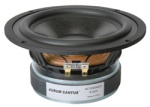
Jantzen JA8008
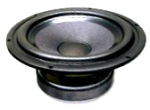
Vifa TC9FD18-08

October 30, 2011
ZRT 2.5 way vented drawings...
At the request of Madisound, this has been updated for clarity for those who wish to build this option. For all drawings posted on this web site, just remember that if I don't have something dimensioned, that basically means you have to figure it out for yourself. As always, measure twice, cut once.
Testing...
I'm going to open up testing for a short period. This is first come, first serve and the number of drivers I test will be limited. Go here for more info. For this test session, drivers will need to arrive at my house by November 14th.
October 6, 2011
Madisound door prize @ Chicago DIY...

Madisound has a pretty tasty door prize they are donating - A pair of ZA5.2 kits with cabinets. These are the new high value cabinets I mentioned a few days ago in the blog, pretty nice. I'm hoping they go to someone who is new to the world of DIY audio, who will then be blown away and hooked on the hobby. ;) Thanks to Madisound for supplying these.
DIY Presentation at Rocky Mountain Audio Fest...
I'd like to let you guys know about a DIY Speaker Building Seminar at RMAF designed for beginner and intermediate enthusiasts. It's being given by Adam Johnson, a business colleague and friend from Madisound. Adam's a great guy, and if you've had the itch to get into the hobby, you will surely learn something at this seminar. And if giving away a full pair kit of ZA5.2 speakers at the Chicago DIY was not enough, he's giving another pair of these away at the seminar. Get there and check it out.
Testing...
In a few weeks I will open up testing for a batch of drivers. I think I will limit it to 5 or 6 drivers. If you have something you would like to send, stay tuned and in a few weeks I will post info on how to contact me here. Please remember my current policy that I may choose to keep results confidential (aside from reporting back to you), and that's generally going to apply to poor performers. I currently don't post bad reviews about drivers, but I will surely post the great performers here in this blog as I have been recently. I don't care who makes a great driver, I will always give credit where it is due.
Sept 22, 2011
New driver tests...
Here we have a couple of the better measuring midrange drivers I've recently tested.
ATC SM75-150S

Very nice, smooth frequency response with only a minor narrow band dip at 4.5KHz. Probably one of the cleanest midrange domes I've tested, with the lower midrange coming close to the noise floor of my measurement setup. Built like a tank - I knew something was up when a 3" dome ships from the factory in a 16" x 16" box. The mild waveuide shape allows for a nicely controlled off axis. The only real downside to this driver is that the flange and magnet effectively make this a 7" midrange, thereby limiting the lowest center to center spacing with the tweeter.
Scanspeak 12MU8731T-00

Good overall midrange with a smooth extended response, lacking the peaks and dips of it's larger midbass siblings. Class leading motor design with very low distortion. Reasonably sensitive for an 8 ohm driver. This could be great in the middle of a multi-way system. It could even work as a small woofer, or at least a lot lower in range than many midrange specific drivers.
ZA5 enclosures...
Madisound came out with a set of enclosures for some of the common ZA5 systems. They are high value enclosures at a pretty good price point. Early on, Madisound contacted me for input on quality vs cost saving measures. The vinyl veneer was their call but it's tastefully done. After significant testing, my call was allowing the front baffle to be square rather than rounded over, but getting the woofer hole backside chamfered. It made a respectable and noticeable difference in the upper midrange smoothness. That's not to say it's that bad with a straight woofer hole, but the chamfer smoothes out a peak/dip/peak combo between 700 and 1500 Hz caused by internal edge reflection.
August 28, 2011
Off topic...

Been spending some time on two wheels lately and I just completed a 90 mile race. I finished in 4:25, which was about an hour after all the elite big money racers finished. I averaged 20.1 mph. I did this in 2008 and did much better this time around, beating my old time by almost 70 minutes. It helps to actually train for the distance.
On topic...
A few winners out of some recent measurements. I've had these for a while, just finally posting them now. Got a few more interesting drivers in house right now, look for some more measurements soon.
Behringer B2031P system measurements...
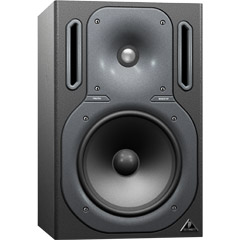
System response seems smooth enough to be very listenable. Vertical off axis shows that the primary lobe is directly in front of the speaker and the crossover point seems to be around 2500 Hz. Looking at the horizontal off axis and tweeter waveguide infinite baffle plots, I would have hoped for better control over directivity. But who can complain when the price is this low. Overall an excellent system for someone who wants a completed system for cheap.
Fountek FR88EX

I was sent a new pair of these to remeasure, as it was my understanding that production moved to a different facility. (or something along those lines) Good news, they measure just like before, and maybe even a bit better in some areas. Still one of the best 3" wide/full range drivers made.
Aurum Cantus AC200-50C2C
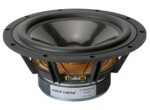
Overall a great 8" woofer. Could be used in a 2-way with a robust tweeter, but would seem to be even better suited to the bottom of a 3-way. Appears to have a well engineered motor, and well designed soft parts with smooth response in it's usable band.
Scanspeak 15W8434G00

Pretty nice small woofer. Seems to have a fairly basic motor design but the cone is great. Excellent smooth response with only a mild breakup at 5.5 KHz.
June 3, 2011
Tested: B&W FST midrange...
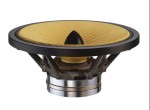
I'm fairly impressed with this midrange from B&W. This is the LF00264 model from an 803D. Similar but not quite the same as the midrange out of the 801 and 802 series. Mounts from the rear with an M6 bolt. Excellent performance within it's useful band. Smooth response and low distortion, and very sensitive on top of that. Slight high Qts bump on the low end, but it's designed to be crossed higher than that anyway. My understanding is that you can actually buy these drivers as replacements from B&W if you want. Not cheap, but maybe worth it to some people.
Tested: Behringer B2031P drivers...

Tweeter, infinite baffle...
Woofer, infinite baffle...
I've been listening to this set and it's really an impressive speaker for the price. Both the cabinet and drivers are very well built and the design is good overall with few obvious flaws. After a good couple weeks of listening, I pulled the drivers to test. Individually the drivers tested well on my infinite baffle, with the only real hiccup being a slight dip in the woofer's response. I didn't find it too noticable in listening. The tweeter is tested without the waveguide. I'll have more tests on the assembled system, but rest assured anyone buying this system will get their money's worth. For the enclosure size, I expected a bit more low end extension but that's easily solved by most folks with a subwoofer. The tonality seems well balanced, and the 4 component crossover seems to do it's job acceptably.
March 31, 2011
The old worn out flat response debate...
So far every hobbyist speaker forum I've looked at has had a discussion recently about whether a flat frequency response is a good design goal for a speaker system. Unfortunately, the phrase "frequency response" is too generic to be answered without some serious qualifiers. Less experienced speaker designers are unaware of the qualifiers. The two primary qualifiers are Where and When. "Where" has everything to do with off axis response and placement in a room, and "When" has to do with reflections. Each of these can be broken down into pages upon pages worth of data and knowledge with much of it getting into physcoacoustics - way beyond the scope of a simple blog update.
A lot of things are important considerations of shaping a frequency response. Harmonic distortion, power response, room placement among other issues all factor in. But make no mistake that none of those considerations are more important than flat on-axis response. That's what hits your ears first, and that's what means the most to your brain. Start there and you are already off to a great start. Then deviate from flat as required to resolve other issues.
The other consideration is "What". What are you listening to? Rock CD's from the late 80s? Recent Telarc Classical CD's? It is true that sometimes 2 wrongs can make a right. Back in the 80's, most music was mixed for vinyl and then dumped onto CD without adjustment. The result was a horrible, piercingly bright tonality particularly with pop and rock. Badly mixed and mastered CD's like that can indeed sound better with a downward slanted frequency response. The type of music plays a part also. For amplified music, there really is no wrong response curve. There is only what the recording engineer prefers, and if you don't like that, it's not wrong to change it. There's a reason why subwoofer setups tuned by ear are generally set 5-10 dB higher than the mains - because people are listening to amplified music, and that's what they like. Unamplified music is different however. There is a standard to be met, and that's a 7th row, center reproduction of concert hall reality. And if you want that to sound as real as possible, you had better design for accuracy.
I have one concept to present in regards to speakers and music: Plan for the best, EQ for the rest. The best is well recorded acoustic music and the rest is amplified music where the proper tonality is subjective. Don't read that as "Rock music is not the best". I personally have more of that in my collection than anything else. What I'm getting at is that tone controls are not evil. In fact I will say that a system without tone controls is a seriously flawed one. Those with high end amps or preamps having only input and volume controls are going to scoff at that one, but it's true.
This is just a little input from your truly on this subject. I could go on forever, but I have a pretty busy schedule these days.
Gems...
Let's post some gems from recent tests. First, a quick shout out to Chris Z for the test samples. Chris is a frequent contributor to Zaph Audio Testing and we've learned about quite a few great drivers thanks to him.
Scanspeak D2604/833000

The only bad thing about the Scan speak tweeter is that it's not an aircirc beater for 1/4 the price. Looks like it outperforms the old Vifa DX25 that it appears to be based on though. Certainly a good tweeter though the $50 price range is loaded with good tweeters. You could probably cross over as low as you wanted, though if you go down to 1.5kHz I wouldn't count on it getting too loud. Maybe 2.2 or 2.4 kHz LR2 could work.
Vifa NE180W
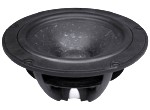
This is a current test sample of the NE180W. I had previously tested a pre-production model and this is fairly similar. The current model does not have the cooling fins of the original I tested, presumably removed as a cost saving measure. Too bad, the cooling fins looked nice and I would guess they are functional for high output designs. The woofer has a small but powerful neo magnet motor in an overhung design with a copper sleeve through the gap. Overall good performance though a slightly lumpy high midrange. This woofer would easily fall into a LR4 design in the 1700-2000 Hz range, but LR2 is possible with some creative crossover work.
Wavecor WF152BD03-01

Very smooth response with a mild breakup that is easily controlled by a simple notch filter. Another excellent motor design and this woofer could probably be used any way you would like to. Slightly higher upper midrange distortion than the test Vifa, but still low enough to be considered a great driver by most designers.
February 20, 2011
SR71 center channel...
Popular user "Lunchmoney" on the PE forum came up with a center channel design to go with SR71 mains. I assisted a little bit but it's mostly his design as he did all the hard work of building testing and tweaking. Check out the Blackbird if interested.
Gems...
Let's post some gems from recent tests. First off, XT19 standard tests and then in a waveguide also. I had already tested these but I lost the results somewhere.
Vifa XT19

Vifa XT19 in MCM waveguide
Looks like a nice performing tweeter with it's standard flange, and even better in a waveguide. The rise in response of the waveguide version is easily filtered back to flat. The XT series with their phase plugs always do well in waveguides because the plug limits throat reflections that cause response artifacts in the top octave. Also note that you can see in the plots with the cap that this tweeter will need an impedance flattening LCR network like it's larger brother. With that it could conceivably work well with the single cap filter. With all this, I though I might try the new OT19 flangeless tweeter.
Vifa OT19NC00 in .25" chamfer rear mount

Vifa OT19NC00 in .50" roundover rear mount
Both look excellent. Fit in the same test opening as the OX20 I tested a while back. Note that I also wanted to test in a waveguide, but I hacked up a MCM waveguide beyond use for this. At the point where the brass screw-in threads are hacked off, the opening is already too big. The other XT19 in the waveguide I tested came from the provider with some sort of throat modified for fit. So I will try that at another time when I have a chance to mill a custom waveguide.
Wavecor WF120BD04

Excellent high end performance all around. Limited North America availability, but I think they are sold at Solen in Canada if you are interested.
Scanspeak 18WU4747T00
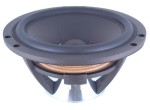
This is an excellent woofer, though it has to compete with it's Revelator sibling that many consider to be one of the best made. Very clean underhung design with very high excursion capability. Aluminum cone has a clean upper midrange with a breakup that will need some work much like most other metal cone woofers. Performance aside, there is substantial build quality here for your (lots of) money. The frame and motor look like they are jewels. Unlike the cheaper tangband overhung drivers, the Illuminator has almost no motor noise at high excursion. You've got to want and need that kind of output however, or you might consider a Revelator instead. Could work in a 2-way but seems to be marketed for the bottom of a 3-way.
February 6, 2011
Update...
Yes, I'm still alive. I've been dealing with an overloaded work schedule for almost 6 months now, a 2 year old daughter that was very sick, and some of my own health issues among other things. I don't expect to get much done this weekend either, with the Packers in the superbowl. All of Wisconsin is in party mode. Quite a few test drivers have come and gone in the last few weeks, look for some of the better results to be posted here soon. I've been meaning to do some major updates to the web site for about 3 months now.
Outrageous statements...
This goes against everything that has been said on the subject of port placement, but here goes: I believe front firing ports outperform rear firing ports. At least, that's just what my ears have told me over the years. I think I may have mentioned this before but now I expect to get empirical evidence from a carefully constructed experiment. This experiment will isolate some of the issues which limit testing that is intended to show midrange leakage from a port.
To tell the truth, I've never seen anyone do a front port measurement that takes all the steps required to remove the output of the front side of the woofer. This combined woofer output causes some measurement artifacts that aren't really there, and sometimes these artifacts are misdiagnosed as organ pipe resonance or midrange leakage. The simple fact is that you can't accurately measure and isolate a port's output if there is a radiating woofer anywhere within several feet. I'll get into the details of why this is the case when I complete the experiment and publish the results. I'll also go into some methods that will allow you to at least get more accurate port measurements. This is something that is seriously lacking in DIY world.
The experiment will use the Peerless 830946 SLS 6.5" Woofer. This is an excellent woofer that is well designed on all fronts. It is closer to a subwoofer than a midwoofer, with some unique properties that make it perfect for this test and the final application I had in mind.
More waveguide tests...
Got in one of the new Vifa OT19 neo dome tweeters. I'll run a set of tests in a normal milled baffle like I did for the OX19, but I'll also try them in a waveguide. The XT series with the phase plug has always done well in waveguides because the early throat reflections are minimized by the phase plug.
November 26, 2010
Thinning the herd...
I've got some unused drivers for sale on ebay. (Edit - all gone, thanks) Everything starts at $1, with no reserve and reasonable shipping costs, so if you are looking for a good deal go ahead and browse. Quite a variety of drivers here, including some cheap buyouts. I need some room on my shelves. It's a short term auction ending Sunday night, US only.
Still testing...
I'm still accepting some drivers to test. As I mentioned a while back, bad or even just ordinary results may not necessarily be made public - I will only publish excellent results from here on out. The only other change to policy is that return shipping labels for either Fed-Ex or UPS most be pre-printed and included if you want your drivers back. (absolutely no USPS return shipments) The old testing page will be updated this weekend with a few other changes around here.
Soundeasy V17...
I just sent in my funds to upgrade to V17 and to get a new USB dongle. Soon I will join the many discussions of getting it working under Windows 7. V18 with 64 bit support will not be out until late next year and I can't wait that long. I haven't upgraded Soundeasy since V14 because I haven't really had a need. Everything has generally been working great since V12 (imho) but I'll just see what's new.
October 31, 2010
Test Results...
Vifa buyout 279-180

Klipsch buyout 299-101
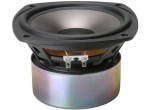
Exodus Anarchy
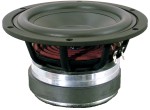
October 22, 2010
On the test baffle...
A couple of buyouts from PE. I expect to complete those any day. Note that I still do test drivers, but I'm generally only going to post results if they are good. Now that I have a woofer on the market, I can't really post bad reviews of competing products without accusations of bias. But I'm pretty sure nobody is going to complain about good driver reviews from me. In case it's not real obvious, I'm still a hobbyist at heart and I do enjoy pointing out good products no matter who makes them.
I got permission from Kevin Haskins to post test results for the Exodus Anarchy. It's a great woofer that tested well and I have to give props to Kevin for the design. It's a unique driver in the 7" crowd. It's also one of the better implementations of XBL that I have tested. The way the copper ring fits in between a 2 piece top plate was a great idea - it puts a lot of copper in the vicinity of the voice coil while keeping it out of the gap for a tighter gap size. The original Extremis had a thick copper sleeve through the gap - great for low distortion but it meant a larger effective gap size and lower flux density which directly translates to lower sensitivity and higher Qts. Additionally the Anarchy seems to have good control over voice coil length, which is critical in the dual gap motor. Too long or too short a coil increases distortion, a problem some XBL motor woofers have.
Oh oh, new computer...
Just a quick edited comment that I'm putting together a new computer based on Windows 7. As everyone can imagine, getting old favorites running under a new operating system with new hardware can be a real pain. Rumor has it that V18 of Soundeasy will have Windows 7 64bit compatability. I will be buying the new version when it comes out, along with a new USB dongle to replace my old Parallel port dongle. The parallel port has joined the floppy disk, ISA slot and VESA local bus in the list of hardware not used or sold in computers anymore. I've been off the upgrade treadmill for a long time, but now I'm looking forward to a serious increase in computing power.
October 2, 2010
Interesting drivers...
Madisound got in a special purchase of black cone hex magnet Excels. The W15 is a great driver to begin with, but the full black color makes for some great visuals. I never did like the copper phase plugs. The Hexadym motor and low price are a sweet bonus.
Seas has an interesting new tweeter, the 22TFF. Looks good on paper.
Just letting you guys know that I'm still alive. Been pretty busy with work and other things over the last couple of months.
August 3, 2010
More test results...
SB Acoustics SB26STAC-C000-4

This is a well made tweeter with a nice cast metal flange and excellent overall build quality. Harmonic distortion is merely average but not a serious issue for most applications. The response curve on the other hand is relatively flat and extended, even 30 degrees off axis. Sample one had a little bit of uncorrelated operating noise at 2kHz while the other did not as much. Sample two did not have a breakup related peak at 15Khz.
Scan Speak Discovery 10F/4424G00

This is a very interesting driver, and my tests were diverse and extensive. Frequency response on the infinite baffle is first rate, nearly a flat line for a 6 octave span. That could open the door for some interesting design oportunities. Harmonic distortion is also very good and we pretty much have one of the better midranges available. Overall it's a well built and tiny midrange that should find it's way into many great 3-way designs. This is effectively a 3" driver with a radiating surface of just over 2". It's hard to understand how small this is until it's in your hand. Use with a small neo tweeter for closer spacing and a higher crossover point.
Good consistency between samples. One had a little higher Qts and lower Vas but close enough to not care. Midrange subenclosure size is generally unimportant as long as it is properly damped. Once I got the T/S parameters, I did some power handling sims and they show that this driver does not need to be treated like a dome midrange with minimal excursion. Even at 300Hz LR2 electrical filtering, calculated Xmax is not exceeded even with 256 watts. Power handling will always be a thermal issue with this midrange unless you try to treat it more like a small woofer than the midrange it is.
Be aware that the rear of the cutout MUST be chamfered or performance will be seriously compromised in several ways that effect both linear and non-linear distortion. This seems to be the case with the tests Vance Dickason presented in Voice Coil, as those results did not look very good. The driver happened to fit my baffle cutout for the Seas 22TAF tweeter, so I just took that and chamfered the back side all the way around including the terminal notches.
Mark K also tested this driver, see his results also.
July 28, 2010
On the (heavy) test baffle...
I'm suffering from a wicked back injury right now, and that baffle is pretty difficult to move around. I had to have my wife help me. After I finish up these drivers, I'll probably put it away for good long time. Results coming up soon hopefully.
In other news, the Unisound speakers have sold. I'm surprised they didn't get snatched up sooner, they are a pretty good speaker. I've got to resist deals like that. I still would like to get into testing small and cheap commercial offerings in the future - that will always be the area DIY can't compete.
July 20, 2010
Some test results...
B&G Neo10

Well this is a strange beast. Meniscus is the only place I know of that is selling it. It was difficult to measure in a home environment, and several extra steps were needed for accuracy. Excellent performance for a planar midrange. The Neo3 is an excellent tweeter, and as I had hoped this big brother also performs well. I think at this point I can safely say that B&G knows how to do planars right. Very low harmonic distortion with almost a total lack of tall order harmonics. Because of it's size and useful upper frequency response, I had to do the HD sweep in two different parts. For the 2nd part, the frequencies above 1.5kHz had the mic distance doubled for accuracy in that region. If the mic was placed too close, the upper octaves would roll off and the HD would also unrealistically roll off.
I could not get T/S parameters for this driver because it doesn't have much of an impedance peak to work with. In fact it doesn't vary more than 1 ohm across the audible range. I can tell however that Q is somewhat high because of the slight peaking of the low end. This driver would not respond well to the similar tiny type of rear chamber the Neo3 tweeter has. You can place the Neo10 in an enclosure without issue, but you should probably go for a well damped volume of at least 1/8 cubic foot to minimize low end peaking. It's obvious however that this driver will find it's way into dipole systems because of it's clean rear ouput.
Off axis response in this driver was taken both vertical and horizontal and this is very important information for this driver. This driver will operate cleanly almost as high as you'd ever want it to. But power response and vertical lobing will be a serious issue if crossed over as high as this driver can run. There will be some tough design decisions for anyone putting the Neo10 to use in a multi-way system.
The response rises with frequency but is otherwise smooth and should be easy enough to control. Kudos to B&G for an accurate spec sheet. My response curve looks just like theirs. The response was pieced together from 3 different mic distances for accuracy. With a driver of this size, too near would roll off the top end, while a distant mic placement will have an accurate top end but allow a lot of room effects to pollute the low end. So, what I have presented here was a pain to obtain, but rest assured it is accurate.
Going off on a slight tangent, I'll mention that I've heard several industry professionals say that it is impossible to obtain accurate measurements in a home environment. This is flat out wrong, and shows the closed mindedness of some people. That's almost like me saying "I don't know how to rollerskate, therefore rollerskating is impossible." There are workarounds and methodologies that may not be known (or ever needed) by someone who has an anechoic chamber at their immediate disposal. Someday when I get some time, I'll write a page on the subject. Time is pretty scarce for me right now however.
Scan Speak Discovery 18W8434G00
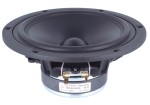
Overall a well built and decent performing woofer that I would call good. Not the highest performing in any one category, but it really does nothing wrong either. With it's smooth response, it would be very easy to work this into just about any crossover topology you could come up with. It has a well ventilated motor with openings behind the spider and a rounded over hole in the pole piece. The motor seems relatively simple but effective. Oops: I did an Le(x) plot but lost it and now the speakers are sent back. But I recall it looking decent enough that I was wondering if the pole piece was undercut.
Still to come are tests of the Scan-Speak Discovery 10F/4424G 4" Midrange and the new SB Acoustics SB26STAC-C000-4 Tweeter. Note that I've finally added my commentary of the Hi-Vi planar and TB flat 4" below.
June 27, 2010
A couple tests...
Hi-Vi_RT1.3

Smooth response curve other than a minor lump at 10kHz. If that were a little higher it would not be noticable, but a peak right at 10kHz tends to bring out tape hiss in recrodings that have it. Harmonic distortion while not great is usable enough. It does not peak at the low end like traditional ribbons do. Off axis curves provided since this tweeter has more variance in that regard than a standard dome tweeter. The face plate is nice looking cast metal. Looks like it was meant for surface mount though I also. tested with the flange countersunk. Overall not bad, but there might be some better options in that price range.
Tangband W4-1757S

This is a well built flat honeycomb woofer with very low harmonic distortion, even in the bass. This would be a class leading 4" woofer if did not have a serious response hickup right at 2kHz. It's surely a result of resonance inherent to the flat cone. Other Tangband woofers using this nice motor with a more standard cone may have better usability .
June 11, 2010
WD TV Live...
I picked up one of these media playing devices from Western Digital. It's a pretty slick, full 1080p high definition device. Even the previous non-connected version is pretty slick, but the Live connects to the internet for various options and plays content right off your home network. It can even connect to the network wirelessly if you plug a USB wireless network adapter into it. I used it both ways, though for wireless you had better have a fast and recent network for full 1080p content.
1080p was beautiful though most of my HD video content is only 720p. Audio was played back very well with a seemingly flat response and low noise floor. My entire CD collection is ripped to high bit rate MP3 and it sounded excellent. I'm trying to decide if the quality loss from redbook CD audio to 320 or 256kbit/s sampling rate is enough to warrant re-ripping the CDs in lossless format. I'm still undecided at this point.
I guess the most amazing thing about this unit is what it will play. So far, everything I've been able to throw at it, and that's a lot of variety in video and audio content. Units like these have been around a long time, but the WD TV Live is a shocase of how far they have come.
Mark K tests the SS 10F 4424G...
This is an interesting small midrange that many have had their eye on since it came out. Mark ran it through his brutal set of tests and then some. Head over there to check it out. This pair of midrange drivers will make their way over here for a run through my normal tests next.
Getting the test baffle out...
I threw my back out a few weeks ago so it should be interesting lugging my 150 pound test baffle out for use. Got a few drivers lined up. Some of them will be published here.
May 28, 2010
Update...
Finally, after some delay, I got the contest results posted. Things have been pretty busy in the Zaph household and I apologize for the wait.
May 9, 2010
2-way contest winners announced!
Overall 1st place winner:
Francisco Javier Huerta - LR4@1.6kHz
Low crossover LR6:
Alexandre Chamagne - LR6@1.1kHz
Second order:
Jay Kim - LR2@2kHz
Conservative LR4:
Jay R. Taylor - LR4@1.8kHz
More information on these contest designs will be placed on a page here under the "Friends of Zaph Audio" section. My commentary will be there along with some additional measurements. 110dB harmonic distortion sweeps for example. Thanks to Madisound for providing extra drivers to send out.
This contest was a lot more difficult than I had expected. In reality out of the 2-way 50 entries, there were maybe "40 winners". I had to really, really nitpick just to narrow it down to 4. There were indeed some losers though - impedances drooping to zero, rough response curves that didn't match modeled response curves sent in, crossover topologies loaded with unneeded components, and so on. But overall, this contest shows that DIY loudspeaker design has come a long, long way in the last 10 years or so. Congrats to the winners.
May 7, 2010
Great news...
For the contest entrants who are patiently waiting for me to announce the 2-way design winner. I was chatting with Adam at Madisound about my difficulties in picking the best. Now I don't have to feel bad about denying some of these the #1 spot. I dug a couple more woofers out of my personal stash, Madisound sent me a couple more and a small pile of tweeters - and now we'll be giving away FOUR pairs of ZA14's and SB29's. There will be a winner and 3 runner ups. Aside from my favorite, I will be selecting the best of different design approches. Stay tuned and thanks for being patient.
Getting real with the ZRT...
There was some discussion about recent T/S measurements of current production Scan Speak 18W8531G woofers. While the response, impedance and sensitivity were nearly perfect and the original ZRT crossover design still works great, there was a mild shift in the Thiele/Small parameters, with Qts up and Vas down.
Using the recent T/S numbers, here we have the basic box model (blue), then adding driver inductance (purple), then adding the primary series inductor in the crossover (red) and finally adding 2pi-4pi baffle step transition with diffraction (green). This is just a calculated model and does not take into account the woofer's naturally rising response. It still looks pretty close to the original measured ZRT, a measurement using all the tricks in the book to get an accurate anechoic low end.
Programs like WinISD are so simplified that they are dangerous and useless. What looks like a minor bit of peaking is usually not a problem in reality. The best anechoic F3 popped out by WinISD is entirely unrealistic unless you listen in an anechoic chamber, with the driver on an infinite baffle, and using an active crossover. WinISD would have people selecting boxes that are too large, with little regard to tradeoffs that should be designed in when T/S parameters are less than optimal. There is absolutely no regard to baffle dimensions, the effect of crossovers on the low end, or consideration of typical usage in a room. Not to pick on WinISD specifically, but that's the one I see used the most.
The ZRT still works well in the 38 liter box size as designed. I definitely wouldn't build any bigger than that volume. Bass tuning is more of a personal preference and is heavily affected by the room and positioning. This is why I usually recommend that people play with the tuning to find something that suits them and their room.
May 2, 2010
Made some progress...
All contest 2-way entries have been initially reviewed and many have been hooked up and given a good listen. I think I've narrowed it down to the top 6 and I should have a winner by the following weekend.
April 28, 2010
Dangerous crossovers...
I'm still working on the 2-way contest entries. 30 down, 20 more to go. Yes, there were really that many. Good thing I kept it a relative secret for my regular blog readers - imagine if I had went on many forums and announced the contest. I was thinking of doing another contest to give away some other drivers in my stock, but I can't really do this again unless I find a way to limit the number of entries.
On to the subject of today's blog entry. In this contest I've come across a couple designs that seem to model well but reality had something completely different in mind. The reality was one or more very small inductors in the tweeter circuit would cause a resonance trap with some teeny weeny unmodeled capacitance in the circuit. I'm not even sure where the capacitance is, likely in the hookup wire. But the result is a deep ultrasonic null that is so wide that it kills the whole top 2 octaves of the tweeter, not to mention the impedance curve droops to zero above 20kHz. We're not talking about a little rolloff - this is a surprise unplanned trap that might cause a very deep ultrasonic null with effects that are 4 octaves wide.
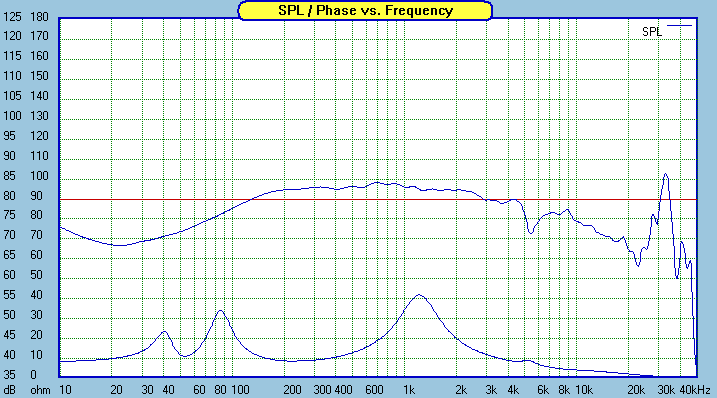
Yes, the crossover is hooked up correctly.
I'm putting some thought into this to figure out which component locations and topologies are prone to issues with small inductors. Problems truly are rare, but they do happen. I've seen it before but I've never put together this many crossovers in this short of time, many of which have some freaky component values. You can't really tell from the model where and when it's going to happen, you only know from real measurements. So, I'm messing with models and adding tiny components to simulate reality. If any useful information comes out of that, I'll post it. But for now this is just a warning to budding designers: watch those tiny values, and if you have to use them, be sure to test reality. Don't let your optimizers run wild - if you end up with extremely large or small values, you probably need to change your topology.
One small value that seems to have consistently worked well is the tiny cap across a large series inductor in the woofer as a resonance trap. Many have used that in this contest, in a similar way that I did in the ZA5 designs, and all have worked as planned.
April 18, 2010
Congrats to...
Dan Neubecker. I've handed the 3-way design win to him. Very nicely done and well thought out design, and very unique on top of that. Dan has a post here with details on the design. All the 3-ways submitted appeared well designed so this was a hard choice. I'm currently going through the 2-way designs. (there's a lot of them)
April 10, 2010
Contest is closed...
I will select a 3-way winner first because there are fewer 3-way entries and it's really just an on-paper design evaluation. The 2-ways will take me some time because there are a lot of entries. I'll get rolling on the 2-ways shortly and post an update with the expected finish date. Some of the 2-ways really push the limits, requiring a bit more evaluation time.
April 5, 2010
Contest submissions...
Email your contest entries here. The contest will end April 9th at midnight.
I want to take a moment to emphasize that while I will be picking a winner, that doesn't mean the rest of the entries are losers. Being selected as a winner doesn't even mean that the selection will be the best for everyone, I just happened to personally choose it for some reason or another. When the contest is over, forum discussion over why you did things the way you did it would be insightful for everyone involved. There is certainly more than one good way to do something.
Other test results...
Morel MDM55

SB Acoustics SB23NRXS45-8
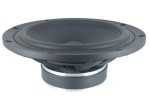
Seas U18RNX/P
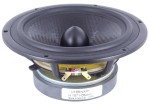
Usher 8955A
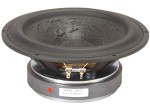
Overall, there's not really a bad driver in this grouping. I'll add detailed commentary here in a day or two when I get time, I just wanted to get the results out for now.
March 27, 2010
Vifa NE line tweeter test results...
Vifa NE19VTA

Vifa NE19VTS

Vifa NE25VTA

Vifa NE25VTC

Vifa NE25VTS

Vifa NE25VTT

Vifa NE line tweeter internal construction...
Thanks to Augerpro for the variety of test samples. It's not too often we get a selection this big of tweeters where everything is identical but the dome material. It definitely points one thing out - dome material is not nearly as important as other design elements. All these tweeters are more alike than different. Overall, linear distortion is very good other than somewhat low beakups on the metal domes. Non-linear distortion is merely average, despite what appears at first glance to be very well constructed internals. One arrive with a dent in the dome so that was sacrificed to have a look inside.
The magnet is a neo slug with a center hole so small that it may as well not be there at all. There is a smaller secondary magnet on top of the top plate. primary ventilation is under the surround, peripherally around the motor. Ventilation under the dome is via holes in the coil former, venting into the surround volume. There are 8 former holes of 2mm diameter. There is a copper cap over the top plate. Voice coil length is 2.5mm, fairly long for a tweeter.
The only real negatives I can see in this design are a lack of a damping pad under the dome and the coil former holes are half blocked by the coil winding. A damping pad would likely result in smoothing frequency response by way of absorbing reflections, but that doesn't seem to be a problem in this design. There may be insufficient venting under the dome however which is increasing the non-linear distortion. Copper in the gap is not a requisite for good tweeter performance but sufficient ventilation is.
Build quality is excellent. It's not often we see metal frames at this price point. The two front protection rails are plastic and bend easily, something I think Parts Express is becoming well aware of in the number of returns with mashed domes. The 3/4" tweeter needs a screw no larger than a #4 as the countersinks are tiny.
March 25, 2010
ZRT's playing at AXPONA...
Madisound had a pair hooked up at the show and there are some comments from Stereophile and Enjoy The Music. It's interesting this system is considered one of cheaper speakers there. It's personally hard for me to consider any $1K+ speaker as "astounding for the price." High end audio shows have never really been my thing but I still get curious now and then. On a side note, I tested another set of 18W8513G woofers recently and they are still very close to what was used in my original design. No changes required and excellent consistency from Scan Speak on this woofer.
On the test baffle...
Six delicious flavors of the new Vifa NE line of compact neo domes:
Be aware the PE had some shipping issues with these. Folks purchasing these may want to check to make sure those issues are resolved before ordering. I'm almost finished and I will post the results before continuing on with the rest of the drivers in house:
All interesting drivers to be sure. The MDM 55 is the favorite of many so some detailed measurements might be of interest. The Seas U18 is a sexy looking woven poly cone with a phase plug and the same motor as the ER18. My hopes are high for all these drivers.
March 22, 2010
Zaph Audio design contest... (updated)
With every batch of ZA14W08 woofers that go through, I pull a bunch for quality control testing. At this point, I have quite a few of these extra test subjects, since I don't put them back in stock. I've also got a couple of test pairs of the excellent SB Acoustics SB29RDCN-C000-4 small flange neo tweeters on the shelf. So let's see, that's about $350 worth of drivers. I'm going to give them away to a couple of winners in a design contest.
There will be two possible entries, the first is a vented 2-way in a ZA5 enclosure. The 2nd is a 3-way with the woofers selected and supplied by yourself. To be clear, two winners will each get a pair of neo SB29's and a pair of ZA14W08's. Here are the rules.
You have measurements of various types to look at on the ZA14W08 product page and the initial SB29RDCN measurements are in the blog below somewhere, including off axis and higher level HD sweeps.The design files include in-box measurements using the ZA5 enclosure, and infinite baffle files for simulation in your own enclosure if you know how to do so. While the 2-way requires the ZA5 enclosure, the 3-way can use your own box if you modify the measurements to include the all enclosure effects. If the 3-way uses something other than the 8" wide enclosure and tweeter/mid driver location of the ZA5, the modified driver file must be included with the submission. Modified driver files themselves will be subject to inspection for proper simulation.
Here are the driver files to work with: FRD format and Soundeasy format.
All drivers are measured individually on axis for proper simulation. Phase is referenced to the baffle, so the acoustic centers are properly represented in these files. Levels are 2.83 V at one meter. The Soundeasy files are set to the range of 10Hz - 50kHz and are good for V14 or greater.
This contest is meant as a design exercise that you don't get to listen to prior to the design completion. This may be much different that the normal routine a hobbyist is used to - listen, tweak, listen, tweak, and on and on. You only get one chance, and that means you have to make all the right design descisions right up front. Use all the information that is available to you on these drivers. Of course, nothing is stopping you from building and listening to your entry prior to submitting it if you happen to have the ZA14W08 and SB29RDCN in house to use.
There may seem to be a limited number of ways to do a 2-way design, but don't be fooled - there are a lot of variables and I don't think we're going to see any duplicate entries. Choose your Fc, filter topology, order of even odd or mixed, slopes, tonal balance, baffle step compensation, and much more.
The contest closes on Friday April 9th. An email address will be posted closer to that date for submitting entries. The winners will be chosen the following week.
February 27, 2010
Buyout tower results and mods...
We'll start out with the individual drivers tested on an infinite baffle under normal testing conditions for that size. Then we will move on to system measurements as supplied.
No real issues with the drivers by themselves, they are decent performing and great build quality. The woofer has about 4mm Xmax as checked through the spider with a laser.
The only problem with the stock system is that it's overly bright. An average wide band low Q treble control centered at 10kHz could actually be enough to resolve the problem and make the system perfectly listenable. A limited vertical window is mildly audible in the power response but only a serious problem if you need a smooth treble response while standing. With this system you get about 15 degrees above the tweeter before a response dip shows up. There are some minor issues in the response curve between 200 and 500 Hz that I will discuss (and fix) below. One final note about the system frequency response curve - It's accurate anechoic, something that's extremely difficult to do in a home environment. Most DIY'ers who measure systems settle for a low end that is gated mush or a response curve that has a ton of room issues showing up in it. Getting extended low end accuracy without room issues requires an array of tricks and measuring strategies.
The system has two connections for bi-wiring, which is normally a waste of amplifier resources. This system however is a little different, with the lower .5 way woofer wired separately. This could conceivably allow adjustment of baffle step compensation by allowing independent level adjustment of the lower woofer. It's slightly more useful than the normal setup that has the tweeter circuit wired separately.
As you can see, the lower and upper woofers have their own enclosures of different size and tuning. The top is slightly less than a half cubic foot while the bottom is just a bit less than 1 cubic foot. The top is generally too small for vented though it is vented and tuned to 52 Hz. The bottom enclosure is tuned to about 47 Hz. The bottom is a little boomy but the top is extremely boomy. Plugging the top port (in back) while leaving the bottom port open seems to be the best balance of extension without boominess. There is a power handling hit for this however since the woofers reach their excursion limits at different frequencies.
The first crossover redesign is meant to be a fix for the stock crossover. Only 2 new parts are needed, a 2.7 uF cap replacing a 4.7 cap, and a 6 ohm resistor replacing a 1 ohm resistor. This simply matches the tweeter response up with the rest of the system, which is generally well controlled. It's a very easy and cheap fix, and this is the one I recommend for most people, unless the normal issues with a high crossover frequency will be a problem. The crossover is at 3700 Hz, meaning there is a limited vertical response window. Horizontal off axis as shown in the plots above is still generally acceptable up to 45 degrees off axis. If you are going to sit down while listening, this crossover fix will be fine. Note that there appears to be two versions of crossovers for these systems out there, it's obvious which one this is for. If you've got the other one, you're on your own.
There are two other modifications aside from the crossover: seal the top enclosure and add damping to the long ends of the enclosure. For the first mod, a black pair of socks works just fine for me though there are many ways to seal a hole. The damping resolves some internal reflection issues from the bottom of the box and the top of the box. If you remove the woofers and reach your hands all the way in towards the top and the bottom, you will touch wood, not damping. You can see these issues in the stock in-box response curve from 200-500 Hz while the woofer is perfectly smooth from 200-500 Hz in the infinite baffle measurements. The problem is resolved with a vary large wad on the bottom filling the area just below the lower shelf, while the very top just needs a big handful. Wool or Acousti-stuf is good, but cheap dacron fiber will do this job sufficiently.
Above we have a complete rework though you can reuse the .46 inductor and unwind the large iron core. Before anyone asks, there is no equation to unwind an iron core inductor, you have to be able to measure it. If you unwind an inductor to reach a value, be sure to keep tension on the wire. Loose windings can cause rattle and distortion.
This design moves the tweeter to mid crossover frequency down so that the system is closer to a point source while reducing the vertical lobing issues present in the version design. There's a bit less baffle step compensation also. I still recommend trying the version 1 crossover first since it's easy and costs almost nothing. If you find limitations in that system that are not to your liking, then move on to this total rework.
The tweeter is an equal distance from 3 sharp sides of the enclosure, and the low end of the tweeter has worst case diffraction ripple that dominates a large front angle of the response. While overall power response of a system is not affected by diffraction, this topology somewhat assists smoothing out the diffraction ripple which is audibly overbearing anywhere in the front 30 degrees of the system. In recent years there has been a move by designers to pay more attention to the off axis response and the power response, but on-axis issues like this can't be completely ignored. The version 1 crossover is high enough that the tweeter's low end response problems in this box are below the audible radar.
In the individual response curves, you can see how the sealed mid response sums with the vented bottom woofer response to avoid a lot of the boominess. Also note that I did not go with a cascaded .5 woofer topology because this was a rare case where a single series inductor worked better.
In summary, these are some great speakers with flaws that are easily fixed. While I'm sad to see any speaker company go out of business and have to unload great speakers at prices like this, I do enjoy jumping on a buyout deal. For $150 and free shipping for 120 pounds worth of speaker, it was even a better deal considering normal shipping costs via UPS or Fedex. It's almost like getting $1500 speakers for free. When I'm done enjoying these speakers, I'll sell them to someone local for what I paid for them, ending this inspection and design exercise and making room for other speakers in my overcrowded house.
Note to folks who value this information: while this blog gets cleaned out now and then, this section will move to the Tidbits page for future reference if needed.
February 14, 2010
Testing a buyout tower...
On a spur of the moment purchase I picked up a pair of buyout Unisound AU265 speakers. The domain is long gone but the site is still available on the web wayback machine. They were being sold by a freaky little web site called Thing Fling, who also seem to specialize in purses and watches. Selling price was $150 a pair with free shipping. I'm hoping to repurpose the enclosures - if you notice, they are just the right width and volume for a ZA5.5tt. But of course I'll give them a good testing to see if the drivers are any good.
A little bit of research was needed to insure that these where not white van speakers. Some posted pictures I saw here and there looked promising. There were Vifa tweeters, a crossover network consisting of more than a single tiny electrolytic cap on the tweeter, enclosures with real wood veneer and 3/4" construction, and cast frame woofers with real copper phase plugs. Compare that to the Energy C500's I recently tested: 5/8" wall vinyl veneer boxes with stamped frame woofers and painted plastic dustcaps shaped like phaseplugs. Even those are considered a large step above white van speakers. So, what we have here with these "Unisounds" looks promising.
Even though $150 a pair is an awesome deal, part of this buyout makes me sad. Behind buyouts like this is a guy who put his heart into a speaker company and failed. It's heartbreaking to see comments about this deal, along the lines of "these are easily worth 3 times the price." Well I know that even at $500 a pair, speakers like this are a money losing venture. They probably needed to sell large quanities of these at $1500 a pair just to break even. Yet, the general public thinks these speakers are only worth $500 a pair. That was probably the first real step into the company's failure. Or to look into that failure a different way, the Unisound marketing department (if there even was one) completely failed to let the general public know that these speakers are a steal even at the price of $1500 a pair. Hell, they failed to even let anyone know they existed at all. Everyone here who's heard of Unisound, raise your hand. (crickets chirping)
Anyway, I don't want to let this post ramble on too much. I'll post measurements when I get them done.
February 5, 2010
More tests in the 8" PE waveguide...
This waveguide was cut back to a 1.610" hole. The 27TFFNCG small neo dome has a "hexagrid" perforated grill and fit this waveguide cutout perfectly. Very smooth transition from the edge of the plastic flange to the waveguide. Unfortunately, this didn't seem to help it's performance at all, and this dome clearly did not get along with this waveguide. Way too ragged to be useful. One thing that might be true: the waveguide to tweeter flange interface may not be as important as previously thought. It's more important that the radiating surface shape complements the waveguide throat shape. I have one more modifaction to try and that will be coming up in a few days. I will use this very same tweeter as a control measurement for the new modification I'm planing. I need to machine a part first however.
Now this is a little more like it. The SB29's unique radiating surface mates well to the 8" PE waveguide, much like the 10". The response is smooth and controlled over most of the range, with only a small response issue at the top of the top octave, and then only on axis. I wanted to better describe the fitup. First the opening is actually 1.610", not the 1.5" I previously mentioned. The SB29 neo's flange raises the plastic waveguide edge over just over the outside surround edge and it clears contact by about 1/32" all the way around. The small neo flange is not removeable and so this kind of fitup is pretty much required. I did inspect the large non-neo SB29 for fitup with it's faceplate unscrewed and removed. For those who wish to try this, the opening will need to be cut to 1.750" to clear the surround and press against the plastic dome mount. No guarentees if that arrangement will work as well, but I'd like to see someone give it a shot. (if I don't myself)
January 24, 2010
SB29RDCN-C000 small flange neo in a waveguide...
Not too bad, though there are some response artifacts on the top end. The waveguide was modified in the same way as the version in the waveguide TMM system on this site. The dimple dome has a bit wider surround than the 27TDFC and the waveguide sits slightly over the edge surround, though not touching it. I suspect that the response artifacts are more related to the waveguide profile near the dome and the unique radiating surface
In this case the tweeter was mounted similar to the previous test. It was milled down to a 1.6" opening and a wood strap held the tweeter in place. There's about 8 dB gain between 1.5 and 2kHz, bringing the peak SPL up a lot, though after filtered down to flat it's going to be low 90's. It's still sensitive enough to work with a woofer in the mid 90's sensitivity with some BSC.
Overall the response is respectably smooth, with the only aberation being some peaking and raggedness right at the top of the top octave. Make no mistake, on axis response in a waveguide IS very important. But in this case it's probably not bad enough to need a resolution in the crossover. 15 degrees off axis and beyond, the response becomes silky smooth. I'd call this arrangement a winner, the first one of several that were acceptable in the 10" PE waveguide. Part number 270-310 is about $12. I suspect it will need some reinforcement to be resonance free particularly if it shares the woofer airspace. This waveguide maintains directivity down to 1.5kHz, fading to a point source below 1kHz. The optimal crossover could be anywhere from 1kHz to 2kHz depending on a designer's favored trade-offs in power response. Vertical lobing will be far less of a problem if crossing over at 1kHz, though horizontal off axis might be smoother if crossing at 1.5kHz or higher. I will of course leave the choice of trade-offs to the designer.
January 15, 2010
Test results posted (with Jan 15 updates)...
Here we have a weird group. I accepted any drivers this time around, some of which are oddballs, buyouts or unobtainium. I tried to keep the measurement conditions the same as their respective groupings. Recent additions of buyout driver tests added to the bottom.
Aurum Cantus AC130/50CK

Class leading non-linear distortion. The only real downside to this driver is a ragged top end that would require some work to hammer into a target slope. It's too bad they didn't use the cone from the AC130F1, it's one of the best cones made aside from the Scan Speak Revelator.
Dahlquist WFR-06VB04B buyout

Performs very well. Not exactly a subwoofer, but it is indeed very clean on the low end. In fact the harmonic distortion is relatively low everywhere with the only blemish being a dip in response at 1200 Hz. These are not well packed and damage is very likely. My test sample arrived with a broken frame, though it did not affect the performance. The sender gave me permission to do a destructive inspection. The pole piece is undercut with a coil winding just under the gap. This is a cheap way to get a faraday ring very close to the coil - the undercut is essentially wrapped with wire and soldered into a continuous closed circuit.
FPS FPS0212M7R521

Strange planar speaker. Does not work well on the low end, but could have an implementation as the high frequency element in a line array, with some filter work to flatten it out. Cheap at $15 each in quantities under 100 purchased from Tenacious LTD, a seller of sound systems built into backpacks.
Goldwood GW-6028
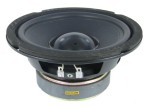
Decent performance for such a cheap woofer. Smooth response curve with an easily controlable breakup though it's somewhat low in frequency. Non-linear distortion is rising in the upper midrange but is usable. Driver has generally decent build quality though the stamped frame does not leave much room for screws.
Infinity Kappa Perfect 6.1/5.1 components

Acceptable non-linear distortion performance in these components, but non-flat response curves could be audible. Typical car audio interiors may help the response issues or make them much worse. These were surface mounted for testing, since that is how they are typically used in a car. The response artifacts visible in the 5.1 and 6.1 woofers are likely the onset of cone breakup, related only to cone geometry and material. Many woofers have a minor breakup related dip that happens lower in frequency than the primary breakup. Build quality is very high however, with nice looking cast frames and machined motor parts.
MCM 55-2421
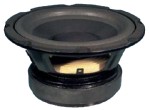
Defintely a subwoofer. With that high Le there's no use trying to use it anywhere over 150 Hz. Very clean operation in the bottom octave. Decent but it's peculiar T/S parameters might require active EQ for use in a traditional enclosure. Non-standard tuning and Fc with a plate amp may help too, for example: 14 liters, 35 Hz tuning with a PR, and an Fc set to 60 Hz for an effective 120 Hz Fc. That type of usage will minimize the peaking above the impedance peak, otherwise bass may tend to be one-note.
Peerless 850443 (NHT surplus)

Excellent buyout woofer. They may even still be available from Jack Hidley as NHT surplus. One unique element is that the shielding cup had a rubber ring around the outside of it. Good thing, because the cup rang like a bell without it. Seriously, you could snap it and hear a 3kHz tone reverberate for 10 seconds. Not all shielding cups are like that.
PHL 2521 (similar to 2520)
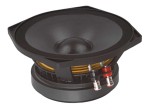
This is the only 8" pro midrange I've ever tested. Very unique driver that reminds me of the previously tested 18Sound 6ND430 in some ways. There is no copper in the motor and inductance is relatively high, however low non-linear distortion is likely obtained through motor strength and heavy saturation of the magnetic gap. Nice midrange driver though there are some serious usage limitations. Off axis of an 8" midrange droops very early and shouldn't be used above 2kHz. The driver is rated at 2mm of Xmax, though the flat foam suspension likely becomes a limit even before that 2mm is used up. For people using this mid, I'd recommend full featured excursion simulations to be sure that low end is not being over worked. That means excursion simulations done with a filter in place.
SB Acoustics TWD25NH-05-08 (Sinar Baja)

This reminds me a lot of the Vifa DQ25. In other words, pretty good. A bit more dip in the top octave, but smooth and clean everywhere else.
Scan Speak 6620-00

Very nice, and pretty much what would be expected for a tweeter that is very similar to the 6600. Strangely, the original user didn't like the way they sounded. It was obviously a design issue that was blamed on the drivers. I've said it before many times, but people can't evaluate drivers while they are used in a system. In a system there is only the ability to evaluate the crossover and design tradeoffs made. That's why I test drivers, and why driver evaluations done without proper individual objective testing should be taken with a grain of salt.
Vifa_OX20SC00-04

Very nice tweeter and being sold without a flange means there are some unique mounting opportunities. Here they are rear mounted in a 1/2" roundover and 1/4" 45 degree bevel. Both are usable though the 1/2" roundover effectively has a bit more top octave droop. Clean and smooth, and works fairly low in frequency for a 3/4" dome.
Dahlquist WFR-05BV02S buyout

Overall a very nice 5" woofer. Well ventilated frame, and peripheral holes in the former and cone under the dustcap provide sufficient pressure relief. Not the cleanest in the upper midrange but generally smooth and usable regardless. Would make a great MTM or TMM 2.5 way design.
Dahlquist WFR-06BV02S buyout
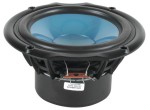
Not reporting results on this woofer as there was an issue with them and they are being sent back to PE. I will give the vendor some time to look into the issue.
JAMO 24394 buyout

Small magnet, high Qts woofer. The Qts is a limitation and these are only going to work in large sealed enclosures. Harmonic distortion is usable, but the frequency response is respectably smooth. I'm generally impressed. What I'd recommend for these is floor standing systems with 1 cu ft of sealed volume per woofer, be it a TM or MTM. I do not recommend TMM 2.5way systems with this woofer as full baffle step compensation would sound a little on the boomy side. The small amount of Qtc bass peaking will not be noticable in a system with less baffle step compensation. Xmax is actually higher than the rated 3.5 mm. There is a sticker on the back of the magnet. There is a vented pole piece, so remove the sticker to make use of the venting. The pole piece hole combines with former venting for absolutely silent operation at full Xmax. These are 4 ohn woofers, so MTM's would need to be series hookup. The frames are actual measured 6.5", meaning these will no doubt find some good homes in car doors.
Nuance TW5-120LR buyout

The bandwidth of these is limited with the high Fs causing an early rolloff, but other than that they are fine. The functional operating size of the waveguide is 3-3/4". I've included off axis plots for people to see what kind of directivity that will result in. For a crossover of 3.3 kHz, a single cap and resistive padding will probably do the job. Those willing to do modifications could easily place a different tweeter element (Vifa OX maybe?) into this waveguide for better low end extension. Just the thing for people who don't want to pay for a Seas DXT. Make no mistake, a waveguide of only 3 or 4 inches in size is still a waveguide. Waveguides CAN be used below their corner frequency of directivity as long as they are paired with a woofer operating below it's off axis rolloff. Then you effectively are running as a point source up to the tweeter's gradual off axis rolloff. With that in mind, I wouldn't use this with 6" or larger woofers, but it may work with some 5's using close mounting.
January 3, 2010
Vifa OX20SC00-04...
This unique Vifa 3/4" dome tweeter is sold without a flange. Fortunately, it's very easy to mount anyway.
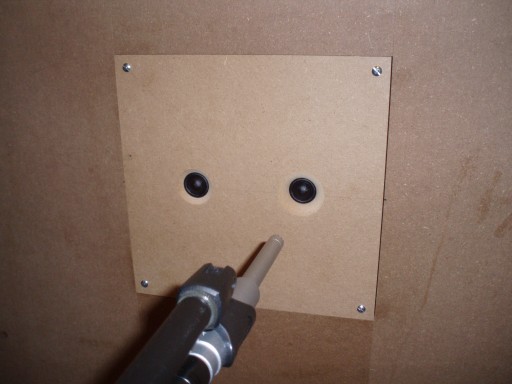
I'll have measurements for this tweeter posted soon, using the two front finishing methods shown above, along with all the other stuff currently under testing.
December 30, 2009
Testing...
While boxes have already begun arriving as early as Tuesday this week, I can see that some probably will not make it until after the new year's weekend due to the holidays. I was hoping to complete all testing by the end of this weekend but I may miss that goal a bit. No worries, I'll still test everything sent anyway but it may take a bit longer because of my schedule next week. At this point I'm not accepting additional drivers.
December 25, 2009
Testing...
Happy Holidays from Zaph Audio. I've got some time off between Christmas and new years and no urgent projects on my plate, so... I'll briefly accept any drivers you would like tested. They don't even have to be on my wish list and buyouts are ok for this round. Note that I don't intend to do reviews or commentary, just testing and throw the results out there. The only requirements aside from the conditions on the testing page: you pay return shipping if you want the drivers back, and all test subjects must arrive on or before Friday Jamuary 1. Preprinted return labels would be awesome. So that gives you a couple days from this writing to decide if you want to send something.
In other news, I've got an interesting design contest coming up and I'll be giving some stuff away. Watch this space for me info.
December 13, 2009
Dayton B652...
Measurements and mods for the ultra-cheap Dayton B652 are posted. If you don't set your expectations too high, you won't be disapointed with this $25/pair speaker system.
November 26, 2009
SB Acoustics SB29RDCN test results...
Looks very good. The SB neo dimple dome is one of the very few small flange neo tweeters that has a rear chamber that actually works. There is a nice low Fs and there is no sign of a double impedance peak that indicates a restriction between the front and rear chambers. Aside from excursion limitations, the presence of a well designed rear chamber is the next most important thing that allows a tweeter to reach a higher output without a large increase in non-linear distortion. A worst case low end tweeter with no rear chamber and no perforated voice coil former has very high and non-linear compression and rarefaction pressures under the diaphram and surround, leading to high distortion that gets much worse at higher levels. The world is full of neo tweeters with rear chambers that are not well designed. Hi-Vi and Morel are a couple of them, with high distortion and the dual impedance peaks that are the trademark of a poorly ventilated rear chamber. A neodymium slug with a tiny hole in the middle isn't going to do it for rear chamber ventilation.
I've got some ideas brewing for the small dimple dome. Stay tuned.
Vifa DQ25SC16 additional test results...
First up, I wanted to see if it matters which way the oblong phase shield on the DQ25 is oriented. Nope, doesn't matter, barely any difference if it's mounted horizontal or vertical. Next up, I wanted to show folks how it behaves at higher levels, particularly in comparison to the small dimple dome above. The DQ25 is one of the best neo domes out there in anywhere near 4 times it's price range. While it has no rear chamber, the voice coil former ventilates the small volume under the surround to the larger volume under the dome. This keeps it clean and allows a bit higher output for a non-chambered tweeter. The +10 dB HD sweep still looks excellent. However, I'd like you to note how and where the tall odd order harmonics increase at higher levels, particularly the F5. Then compare this to the same thing for the SB Acoustics SB29RDCN shown above. This pretty much explains why I cross over higher in the multi-driver ZA5 designs that are expected to play louder. When doing system design, you have to think about how a driver's design limitations are going to affect things.
While the DQ25 is excellent, the SB Acoustics SB29RDCN will play cleaner lower in frequency at higher levels. Don't count on me redesigning the ZA5 to use the small dimple dome however. I work around the DQ25's limitations and thoroughly enjoy the pricing.
Seas neo dome off axis tests...
I may select one of these for a car audio study. I wanted to see how the off axis compares. Pretty close, but the metal dome with the phase shield seems to do a bit better, and off axis tweeter performance is much more important in the car than in the home.
Well, off to eat a turkey dinner and watch the Green Bay Packers demolish the Detroit Lions. Expected score, about 100-0. :)
Yours Truly, John "Zaph" Krutke © 2009
Back to -Zaph|Audio-